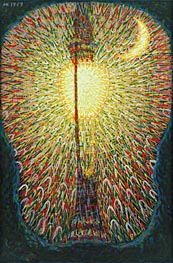Giacomo Balla Giclée Fine Art Prints
1871-1958
Italian Futurist Painter
1 Giacomo Balla Artworks
SKU: 13365-BGI
Giacomo Balla
Original Size:174.7 x 114.7 cm
Museum of Modern Art, New York, USA
Giacomo Balla
Original Size:174.7 x 114.7 cm
Museum of Modern Art, New York, USA
